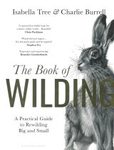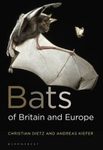"[...] Saltmars are muddy, out of the way, forgotten places; somewhere between the land and the sea, perhaps where the normal rules do not apply. Clive Chatters does not shy vay from this perception in this excellent book but takes us on a fascinating geographical and historical tour of the major salt marshes of Britain, exploring the physical and conceptual boundaries of one of our rarest habitats. [...] There are fascinating and painstakingly researched asides [...] although not covered in depth the particular value of saltmarshes to invertebrates and great diversity of species associated with them is fully recognised in this book [...] This [...] is an excellent read and should appeal to all general naturalists, saltmarsh enthusiasts and students of conservation alike ."
– John Sproull, Atropos 61, 2018
"Saltmarsh is the fifth book in the recently started British Wildlife Collection and, like the previous four, it is well researched and well-illustrated throughout and uses a similar narrative style. It contains a wealth of information about its subject matter, focusing on the wildlife, history, development and past and future conservation of this marginal coastal habitat. [...] The book is interesting to read and will be enjoyed by those who enjoyed the previous volumes and/or have an interest in this particular habitat."
– Ian Woodward, BTO book reviews
"I hate to sound like an amorous drunk, but I have to admit that I bloody love the British Wildlife Collection. The series is only slowly building up, but the five published books cover interesting topics, are beautifully produced, with a layout that complements the numerous colour photographs that authors are allowed to deploy, and reasonably priced in relation to the high production values. Clive Chatters has maintained the standard in this excellent new book which deals with an often remote and slightly inhospitable habitat that attracts wildlife in droves. As the series names suggests, the focus is strongly on British examples but the author roams the country widely and brings the marshes he visits vividly to life. Splendid stuff. I bloody love it."
– Alan Crowden, BES Bulletin, Volume 48(4), December 2017
"I expected this book to be an ecological account of the habitats of ‘tide and time’. And so it is, but it is much more than that. After outlining a much broader concept of saltmarsh, and covering plenty of its ecology, the bulk of the book is concerned predominantly with history – but a unique history from the perspective of the saltmarsh. [...] A substantial chunk of the book is devoted to detailing the initiation and evolution of the conservation movement, in which saltmarshes, mainly because of the important bird communities which they support, played, and continue to play, a pivotal role. [...] Each of the 21 chapters presents a different story for which Chatters selects a different saltmarsh system from around Britain to demonstrate his point. [...] Chatters writes with authority and eloquence on an enormous range of topics and draws from an impressive range of sources [...]. All are meticulously yet unobtrusively cited in the text such that the story is not disrupted. He discusses contentious issues non-judgementally"
– Ros Bennett, British Wildlife 29(1), October 2017
"Saltmarshes are often remote, inhospitable places, neither land nor sea, as hard to pin down as they are to navigate. In this saline odyssey, Clive Chatters has explored his favourite creeks, pools and mudflats to bring us an absorbing celebration of the ecology, biology, geology and history of this scarce and mysterious habitat. There are Tadpole Shrimps, and rare sedges, waders and Wild Celery – even inland saltmarshes – in this tour de force by a superb naturalist and writer."
– Brett Westwood









































